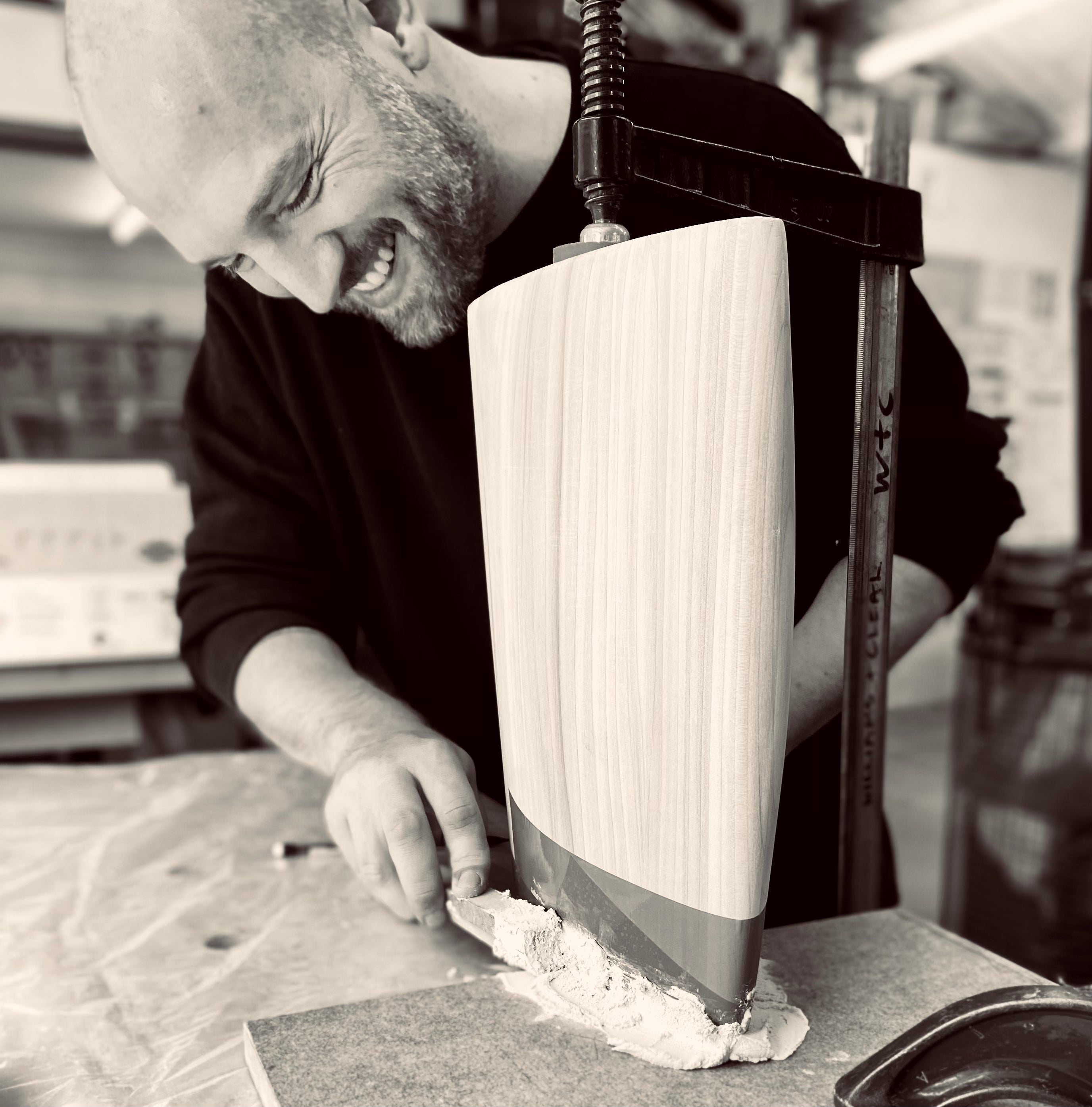Daniel Hayden is a furniture designer and maker based in Bristol, UK, specialising in contemporary pieces using simple, sculpted forms and traditional woodworking techniques. Here he talks through his design and creation process.
Please paint us a picture of your workspace
I share a workshop in Bristol with three other cabinet and furniture makers. They own the building together and I’m their tenant, and I feel really lucky to have stumbled across such a great space with such lovely people. It’s a quirky building that was built in the war as an air raid wardens’ HQ and there’s apparently a bomb shelter underneath my bit.
The main workshop space has all the machinery and really great light from skylights in the roof, and then I have my own little room which is cosier but has enough room for me to spread myself out and juggle multiple projects at once. When I moved in, I spent a couple of days covering the walls with tool racks and routing templates and things, mostly just to make it feel comfortable and conducive to being creative.

How long have you been creating furniture and why were you drawn to it?
I had been interested in interior design for years, but found that what made me really happy was making things for the home with my hands. I always loved furniture but was intimidated by woodwork, so I kept putting that off until I eventually took the plunge with a great introductory woodwork course at a community centre here in Bristol, and loved it so much that within weeks I’d booked a place on a full-time course at the Williams & Cleal fine furniture school in Somerset. I spent the latter half of last year there and it’s given the most incredible grounding in furniture design and making. It’s all very new so I’m super grateful that people are being so generous in their responses to what I’m putting out there.
We’re very curious about your design process. How do the designs for your pieces come to you?
I don’t come from a design background but my girlfriend is a knitwear designer and I’m hugely influenced by her approach, both consciously and unconsciously I think. I’m not sure I can say I have ‘a process’ exactly, but I do put a lot of time into each piece before I start making, through a combination of initial hand sketching to record ideas and then an iterative process in CAD, where I kind of sketch the basic idea to the right measurements and then tweak and tweak until it feels right.
What I have found is that I need constraints initially, even if I go on to break them, and that for me the design is going well once I start perceiving a personality in the piece. Then all the work becomes about how to emphasise or balance out aspects of that personality.
Do you or have you worked with mediums other than wood?
Yes, I tried all sorts over the years, with mixed success – I started with a couple of short metalwork courses, then I got very into pottery for a year or so. Then like many people I fell in love with Gees Bend quilts and tried my hand at quilting, and the Giacometti exhibition at the Tate Modern set me off making lamps and candlesticks out of plaster and wire. Our house is full of the results of all those experiments and although I’m not doing any of those things now, it’s lovely that there appears to be a thread running through them all and they sit well together. I’m sure I’ll start bringing some of that stuff into what I’m doing now eventually.

Which piece is the most taxing to create and why is this?
The Chapel chair is more taxing than it looks and takes a long time because the back of the chair is carved from a block of solid wood, like a giant wooden spoon. You have to be really careful carving the back so that it’s nice and thin, leans back at the right angle, tapers in thickness, has the right curve so that it’s comfortable and has no lumps and bumps. I design using CAD, which is great, because you can print physical templates to help make sure the curves and angles are right, but it’s still tricky. But having said that, I’m really not striving for perfection – I’m very happy if two chairs have subtle differences that demonstrate that some decisions have been made by eye or that elements have been hand-tooled or whatever.
Of all the pieces you’ve created, which one holds a special place in your heart?
I love the Chapel chair because it’s got loads of personality and feels like a proper expression of what I’m about. But I’m really fond of the first chair I ever made, years ago, which sadly is now gone because I let it rot in the garden. That was the Sedia 1 chair by the Italian designer Enzo Mari. In the seventies he put out a pamphlet called Autoprogettazione, which contained simple plans for pretty much all the furniture you could need in a home. They all used cheap timber in standard dimensions, so you just had to buy some planks, saw them to length and hammer them together. I made my chair in an afternoon, out in the sunshine, and felt such satisfaction in having made a proper piece of furniture with real character. It pretty much set me on this path and now I’m just sorry I let it die!

